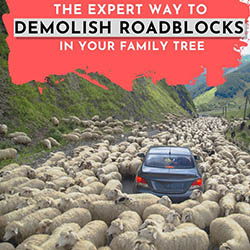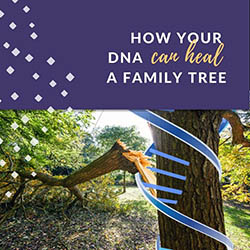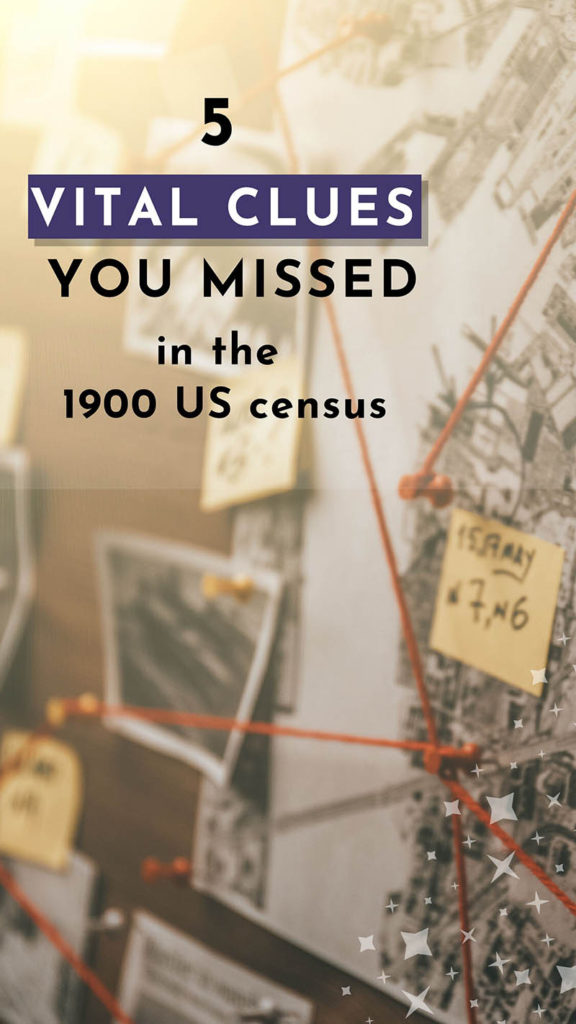
The census is, hands down, the backbone of building your family tree.
And the 1900 US Census, in particular, is my favorite census. It’s got so much good info about your family!
But I’ve noticed something — most people don’t pull out all the info the 1900 US Census has to offer!
It’s partly because people don’t know what all the information means. And partly because some of the info is hidden.
Every 10 years, the US counts its population — that’s called a census. The census asks lots of questions about people, so it gives us quite a bit of info about people and families.
But I want you to think of the census like hot chocolate mix — you have to mix in water/milk to actually have a delicious cup of hot chocolate. Similarly, if you mix in a few tricks and ingredients with the census info, you’ll get a fantastic story.
Below I’m showing you how to find 5 vital things most people miss in the 1900 US Census — and then turn that info into a story. I’ve also got a worksheet that’ll walk you through doing the same for your family.
Ready? Let’s do this!
The Flynn family in the 1900 US Census
Here’s John Flynn and his family in the 1900 US Census (they’re highlighted in pink).
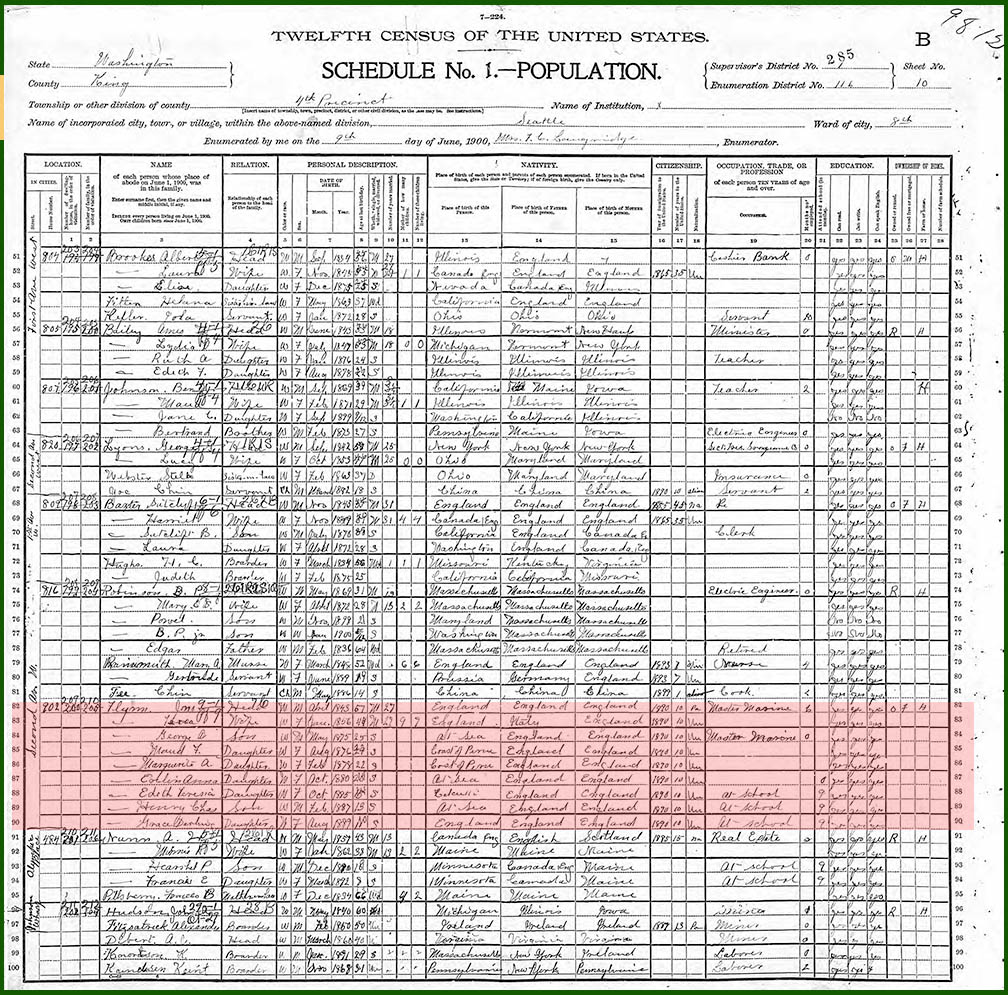
Every row is about a different person. Each column is a different question about that person.
The very top of the page tells us that this family lived in Seattle, Washington, in 1900.
OK, let’s get down to details — what can the census tell us about this family?
The video below shows a quick overview of what you can find. Scroll down for all the how-tos.
Clue #1 — Overlooking all of the family’s children
First off, we’ll zoom in on the family members:
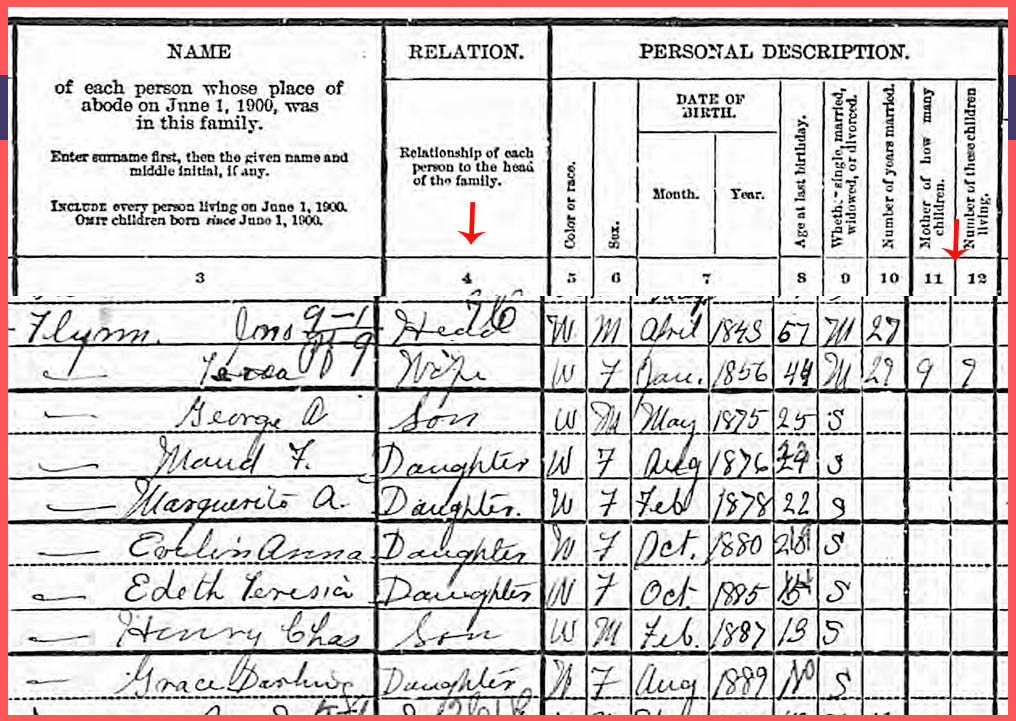
Column 3 lists the names of the people living in the Flynn household on June 1, 1900. Column 4 (see red arrow) states how each person is related to the head of the house. (BTW, I’m slicing and splicing together the census image from above so it’s easier to read and understand. #LovePhotoshop)
So what we see here is a husband (Jno/John), wife (Teresa), and their 7 children.
We then get details about each person — their race, gender, birth month and year, and more. But let’s skip over to columns 11 and 12 (second red arrow).
Column 11 asks how many children has a woman given birth to. Column 12 wants to know how many of those children are still alive.
Teresa Flynn (the mother/wife in this family) has given birth to 9 children, and all 9 of them are alive. Now, wait, something seems wrong here. Did you catch it?
There are only 7 children listed as living with the family. But she has 9 living children.
So . . . where are the other 2 children?
I’m not certain, but let’s notice a few things:
- First, column 10 give the number of years the husband and wife have been married. For John and Teresa Flynn, that’s 29 years (John’s number is hard to make out, so we’ll go with the number given for Teresa–29)
- Now notice their oldest-listed son George’s age (column 8): He’s 25.
- If John and Teresa have been married 29 years, they could have 1 or 2 children older than George. Those children could be married and/or living in their own home.
Here’s another idea: there is a 5-year age gap between daughters Evelin Anna and Edith Thersa. The other Flynn children have only 1-2-year gaps between them. So perhaps one of the missing children falls between those two daughters. That potential missing child (approx. age 16-19) could be away at school, living as a servant in another household, staying with relatives, or many other options.
For either of these two scenarios, you would want to search the 1900 census to find these 2 children on their own.
Now, it’s possible the missing children are younger than daughter Grace Darling, who is 11. However, for this family, I doubt there are children younger than Grace because it’s more likely that children younger than 10 would be living at home with their parents rather than somewhere else.
OK, let’s move on to some really interesting things…
Clue #2 — The family’s timeline from the 1900 census
The 1900 US census tells us the birth date and place of each person in the family. Here’s the Flynn family showing the family members names, birth dates, and birth places:
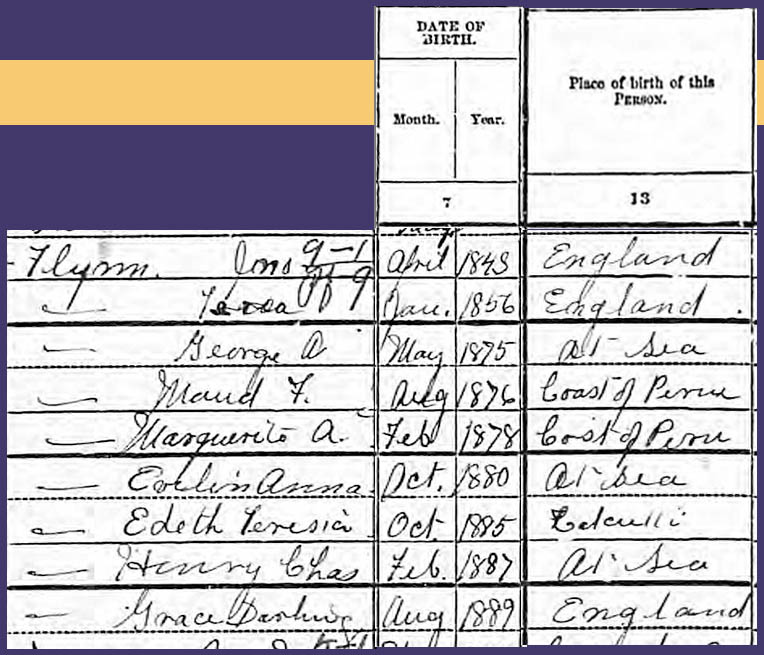
Woah! Notice where the Flynn kids were born — At Sea, Coast of Peru, Calcutta! Interesting.
Why were they born in these places?!?!? Well, we’ll get some more clues to that in a couple minutes.
But first, I want to show you how children’s birth places create a timeline for the family. This next image removes the names and shows only birth dates and places:
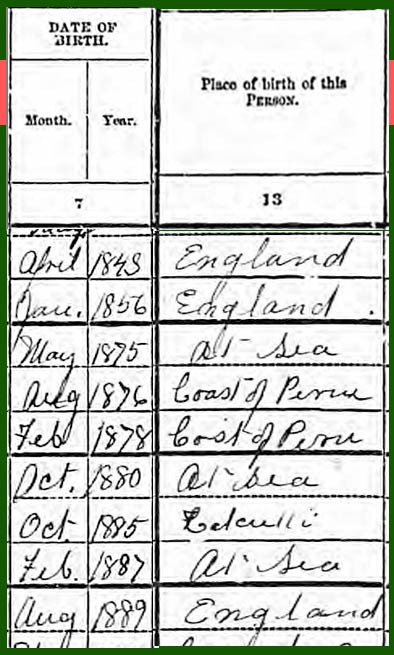
The first two lines are the parents’ birth dates and places. But the remaining birth dates and places are for the children. Notice how they create a timeline of where the family was every few years.
The census does the same thing for your own family: Since a family (well, the biological mother, at least) has to be in the same place as where a child is born, children’s birth places give us a quick timeline for a family.
This can be especially helpful to know where to look for historic documents about a person or a family. For example, let’s say the 1900 US census shows a family’s 4 children were born as follows:
- December 1879 in Illinois
- September 1882 in Kansas
- April 1883 in Kansas
- November 1885 in Colorado
Now you have a rough time line of where to look for records for this family from 1879 through 1885.
Another question that comes to (my) mind is why the family is moving so often. Sometimes, like in the case of the Flynn family, the father’s occupation offers an answer . . .
Clue #3 — The context of occupations beyond the 1900 census
As it turns out, John Flynn’s occupation gives us the answer to why his kids were born in such unique places. Can you guess? Here’s his occupation according to the 1900 US Census:
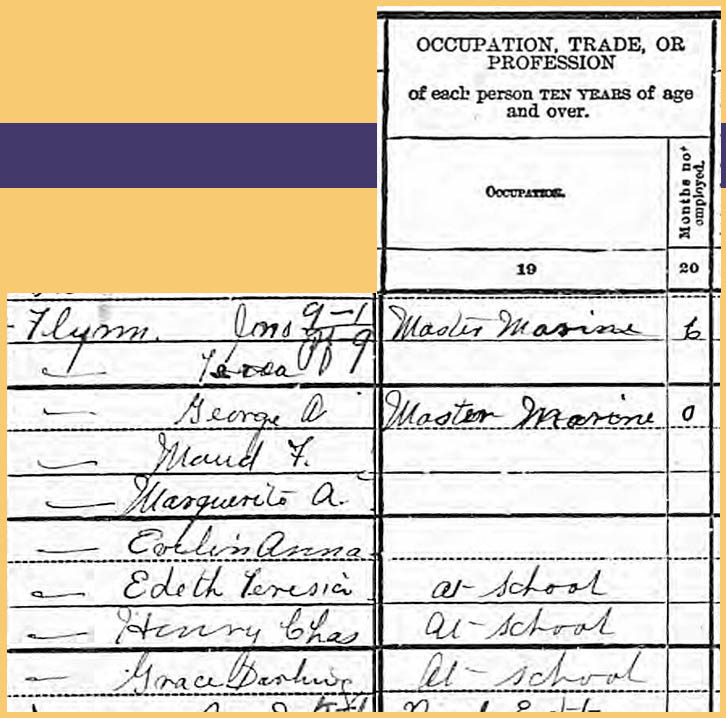
John is a Master Marine, as is his son George. The three youngest children are in school. Teresa and the other three daughters are probably “keeping house.”
What’s a master marine? It’s another way of saying master mariner — as in sailing, ships, and sailors.
So . . . thinking back to the children’s birth places, it seems is that, from at least 1875 to 1887, Teresa joined John as he sailed around the world. She birth and raised their children aboard the ship.
What a life! And what a wife! She might be my new #MomHero.
And doing a bit of Goggling, I discover that John would need to be the ship’s captain (or pretty high up the pecking order) for his family to be on board with him. Also, he’d be commanding merchant ships, as opposed to Navy ships.
So the lesson for your family tree is to Google an occupation and see what you can learn about it. Especially in the context of the time and place when that person lived — because occupations can mean different things in different time periods and even different places.
Now that I’ve uncovered John’s occupation, I’ve got several new questions, such as:
- Can I learn the name of the ship the family was on?
- Was John really the captain of a merchant ship, as I suspect?
- Can we find birth records for their children born on board the ships?
To answer these questions, we need to first discover what kind of records exist about merchant ships and crew.
Clue #4 — Use birth locations to discover birth records
Since John and wife Teresa were both born in England, as was their youngest daughter, I suspect that England was their “home base” and any needed records would be located in England or on a website with English records.
And, as luck would have it, England kept records of Births, Marriages, and Deaths at Sea during the time period when the Flynns sailed the world.
Adding to that luck, those records are on Ancestry.com AND one popped up as a hint for the Flynn’s daughter Evelin (see orange highlight):
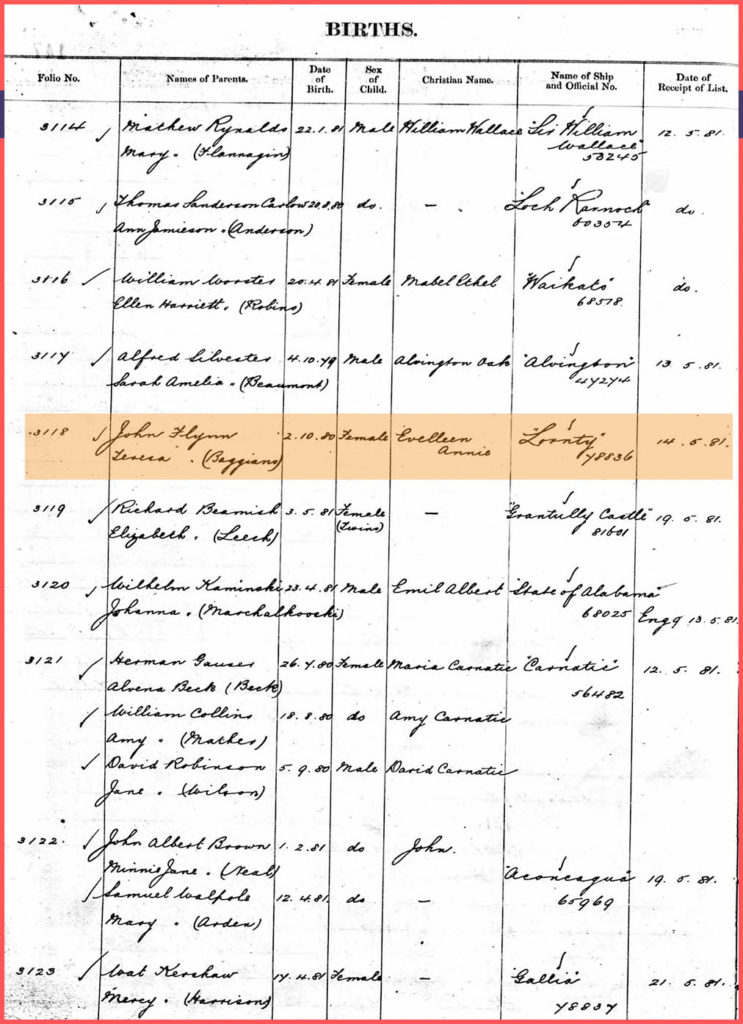
OK, from this register, we learn that Evelleen Annie Flynn’s birth date is October 2, 1880. (Name spelling is different from the census, but that’s fine. This is the right person and family.) She was born on a ship named Lornty.
Add context to a discovery
Now, can I find any info about the Lornty? Or maybe a picture?
Yes! Actually, I did find info.
It took several Google searches focusing on British merchant ships and shipping in the late 1800s, but I eventually stumbled on a 1881 Lornty crew list on the UK’s The National Archive’s website.
Guess who was the ship’s captain. Yep, you’re right, John Flynn.
Then I found a picture of the ship:
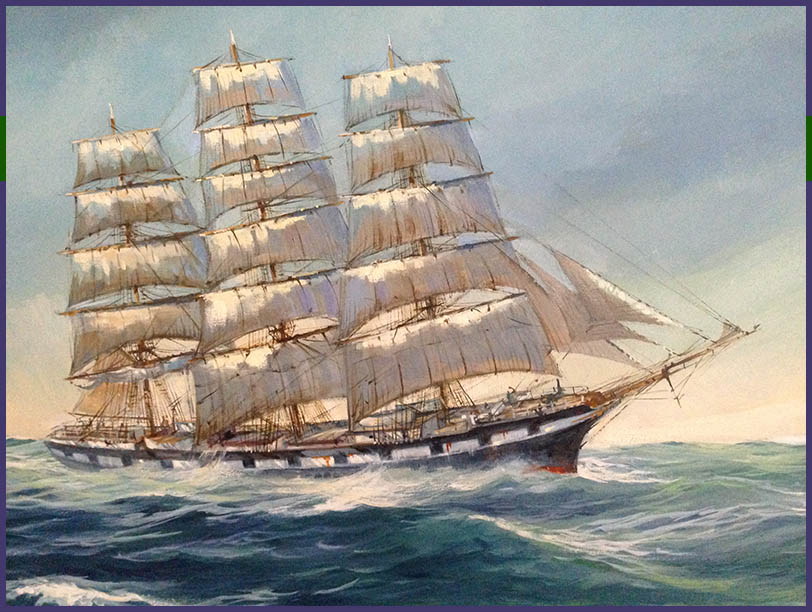
Imagine giving birth to and raising children on this ship! Teresa Flynn is my #MomHero.
I also stumbled on a website called CLIP (Crew List Index Project) with a couple of documents that told me Lornty‘s home port was Liverpool, England.
The lesson for you: Get curious with your own family. You don’t know what’s out there until you start searching. Google searches turn up some pretty amazing things. (Like, someone has a personal blog and claims to have Teresa Flynn’s journals kept while sailing with her husband . . .)
Clue #5 — Do the marriage math
Let’s get back to the 1900 US Census. We’re going to take a closer look at John and Teresa, the husband and wife of the Flynn family.
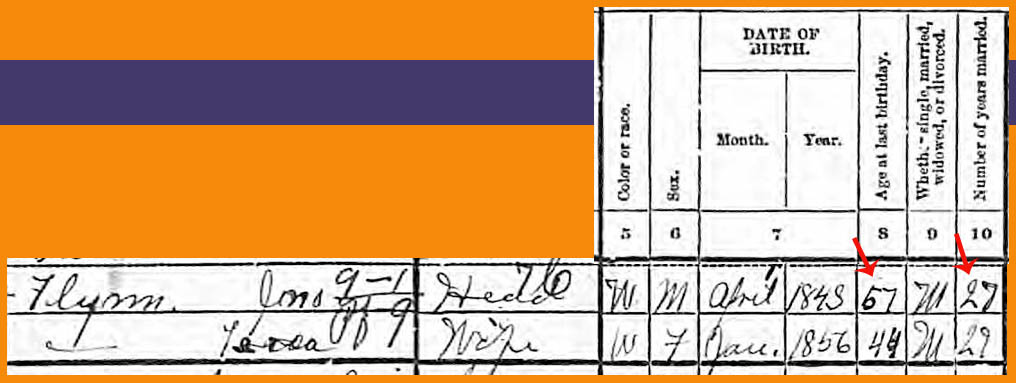
In this image, we want to pay attention to John and Teresa’s ages (column 8) and the number of years they’ve been married (column 10).
First off, notice that there is a 13-year age difference between the two. (Column 8 gives us the ages to work with: 57-44=13.)
Next, column 10 states they’ve been married for about 29 years. We can get two interesting facts from this number:
- They married around 1871. (Subtract the number of years married from the year of the census to get the approximate marriage year. So: 1900-29=1871)
- John was 28 when they married. Teresa was 15. (Current age – number of years married = aprox. age at marriage: 57-29=28 and 44-29=15)
OK, so WOW! big age difference, and she was quite young.
Proposing some marriage questions
For this place and time period, the age gap and the bride’s young age isn’t too strange or remarkable. (I mean, just 50 years earlier people all over England were marrying their 1st cousins. Heck, parents often encouraged such marriages to keep money in the family. But I digress.)
However, their age gap makes me wonder a couple things:
- Was John Flynn married prior to Teresa (in other words, was Teresa his second wife)? And if not, what was he doing during his early 20s?
- Why did Teresa marry so young? How did her family feel about it? Was her home-life situation really bad? Did her parents have to give consent for her to marry since she was so young? Or did they have to run away to Grenta Green to elope? (Can you tell I’m a hopeless romantic? LOL!)
- Did John Flynn die before his wife? With their age difference and considering his rugged career, it wouldn’t surprise me if he died several years before Teresa.
Lastly, you probably already figured this out, but we’d want to start searching for a marriage record in England.
When considering a couple’s love story from your family tree, think through questions based on their marriage ages, time period, and even potential place. If something strikes you are interesting, curious, odd, or otherwise out of the ordinary, make note of it. Then see if you can find the answer.
Discovering John and Teresa’s love story
For brevity sake, I’m going to focus on the last question — Did John die before his wife?
I searched through Washington state death records and other sources and discovered that, yes, John Flynn did die some 35 years before his wife.
In the process I found a couple cool things. First, their grave stone at a cemetery overlooking Seattle:
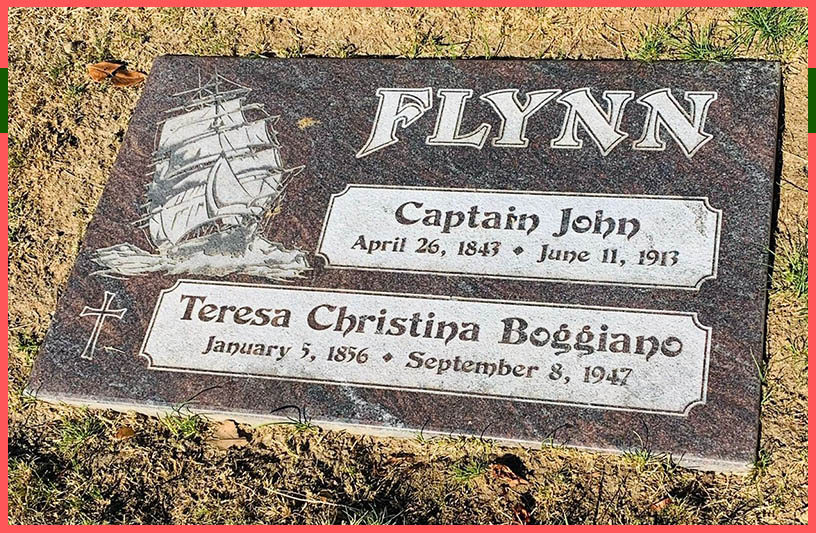
Seems these two people were always together — in life, at sea, and in death.
Then I found this picture (supposedly) of John and Teresa:
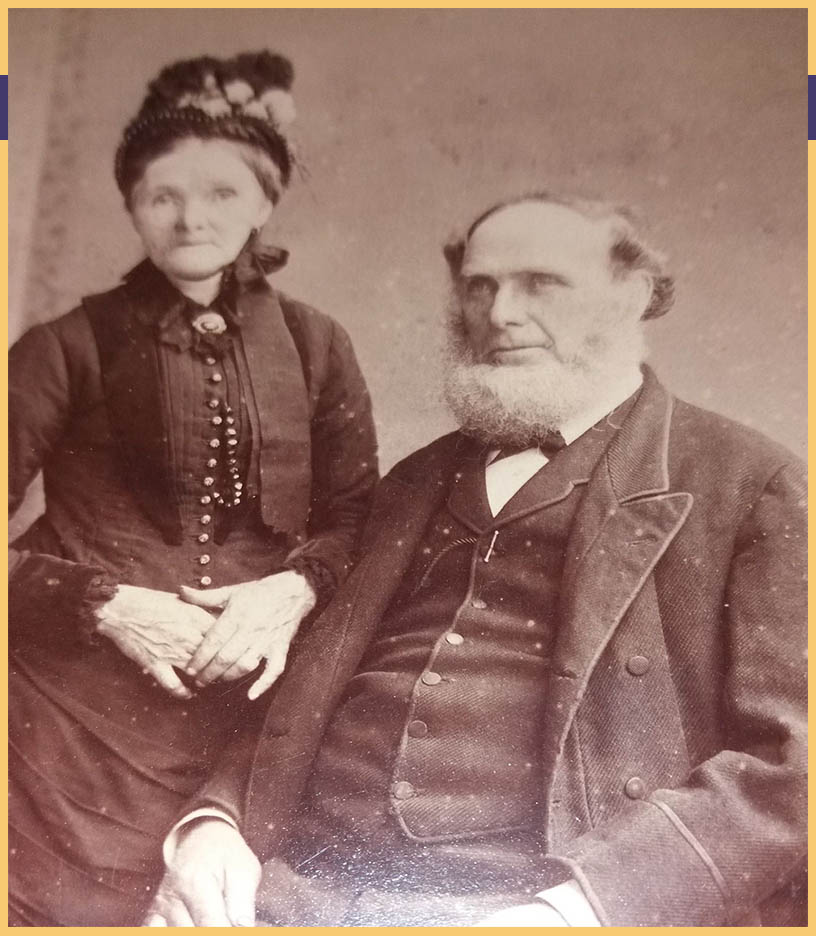
It’s undated, but (assuming this is actually a pic of them) my guess it’s from sometime after the 1900 US census. She looks older than 44 to me.
1900 US census clues in your tree
My Ancestry.com research team stumbled in to while building a random family tree for a regular person, just like you and me. I make that point because so many people think their family isn’t interesting — well, I beg to differ. You just don’t know what you’ll find.
The 1900 US Census is the key that unlocked the awesome story about this family. Seriously, this census page we’ve been looking through right here. We found this census and, all of a sudden, had so many leads to follow.
And guess what, the story was almost missed.
Yep! The researcher who initially found this census brought it to me all excited about the dad’s occupation. But they hadn’t dug deeper to pull out those hidden clues. And those hidden clues are so vital to bringing the family’s story to life!
I don’t want you to miss these clues in your own family’s 1900 US Census. So I created a worksheet that will walk you through pulling out info that we’ve gone over in this article, as well as more things — like their exact address, immigration information, unnamed parents in the census and SO much more.
Don’t ever miss a clue about your family in the 1900 US Census. Download this worksheet and pull out all those juicy details!!!!
Read Next
Sources
- Eveleen Annie Flynn entry, UK, Registers of Births, Marriages and Deaths at Sea, 1844-1890, database online, Ancestry.com, 2016, original data: The National Archives of the UK, Kew, Surrey, England, Registers of Births, Deaths and Marriages, Class: BT 158, Piece: 4, accessed 17 February 2020.
- John Flynn family, 1900 United States Federal Census, database online, Ancestry.com, 2004, original data: United States of America, Bureau of the Census, Twelfth Census of the United States, 1900, Washington, D.C.: National Archives and Records Administration, 1900, T623, 1854 rolls, accessed 17 February 2020.
- John Flynn memorial, Find A Grave, found online at https://www.findagrave.com/memorial/180022027, accessed 17 February 2020.


